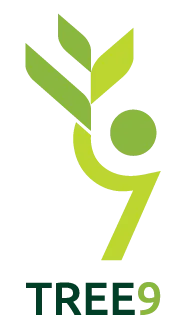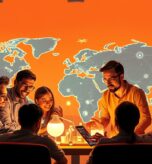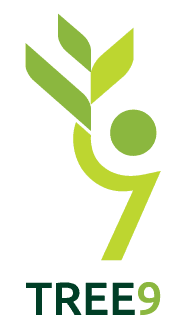Leading organizations understand that exceptional design talent drives market differentiation. The difference lies not just in finding skilled designers, but in aligning their expertise with business objectives. Julie Zhuo’s experience scaling Facebook’s product teams reveals a key insight: mastery of craft must pair with strategic execution.
At Tree9, we help advertising and software firms access global design professionals who balance creativity with technical precision. Our remote staffing model reduces overhead by 40% while maintaining quality—connect with us at [email protected] or via our LinkedIn profile to explore solutions.
Effective collaboration between designers and stakeholders requires shared processes. Facebook’s early emphasis on prototyping and user testing, for example, became foundational to their product success. This approach ensures teams work together to solve problems, not just deliver visuals.
Key Takeaways
- Strategic alignment between design and business goals drives brand impact
- Remote staffing models optimize costs without compromising quality
- Process-oriented designers deliver scalable solutions
- Portfolio reviews should emphasize problem-solving over aesthetics
- Global talent pools offer diverse perspectives for innovation
In the following sections, we’ll break down how to evaluate portfolios, structure cross-functional teams, and implement hiring frameworks used by industry leaders. Discover how to transform your creative recruitment into a competitive advantage.
Understanding the Role of Designers in Brand Success
In today’s market, a brand’s visual identity often determines its competitive edge. Strategic designers don’t just create visuals—they shape how people interact with products and perceive value. This alignment between brand goals and creative execution separates industry leaders from competitors.
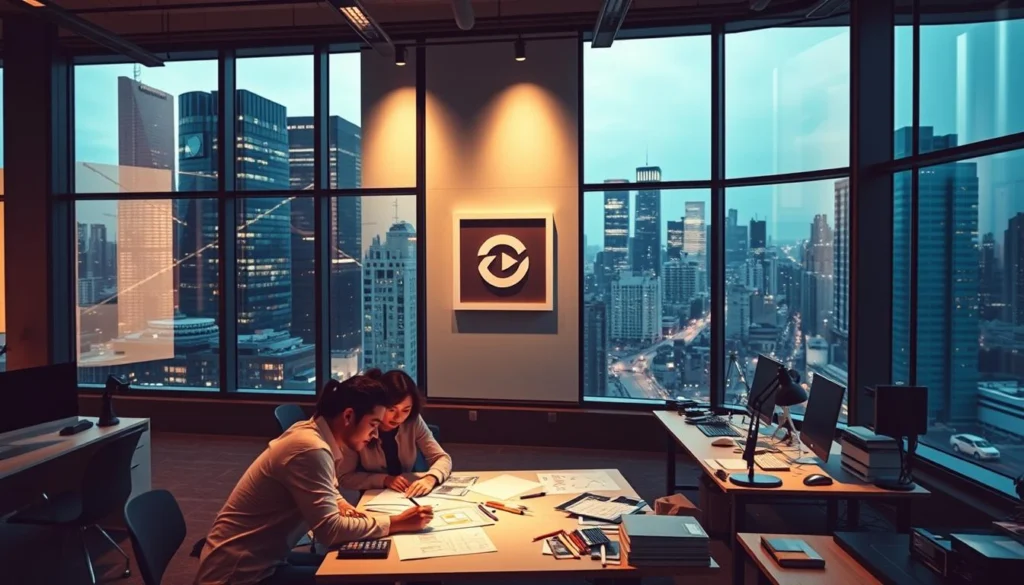
The Designer’s Impact on Product Strategy
Julie Zhuo’s work at Facebook demonstrates how design teams drive product evolution. By prioritizing rapid prototyping and user feedback loops, they transformed abstract ideas into features used by billions. Effective designers ask, “How does this solve real problems?” rather than focusing solely on aesthetics.
| Traditional Approach | Strategic Approach | Business Impact |
|---|---|---|
| Focus on visuals | Solve usability issues | 23% higher retention |
| Individual creativity | Cross-team collaboration | Faster time-to-market |
| Static deliverables | Iterative process | 34% cost reduction |
Design as a Competitive Advantage
Companies like Airbnb and Warby Parker leverage design to dominate markets. Their teams work closely with branding specialists to create cohesive experiences across digital and physical touchpoints. This synergy between strategy and execution results in 4-6x higher customer loyalty compared to price-focused competitors.
We help businesses build these capabilities through our global talent network. By matching organizations with designers skilled in both craft and strategic thinking, brands achieve measurable improvements in user engagement and market share.
What Successful Brands Get Right When Hiring Designers

Top-performing companies approach designer recruitment as strategic brand investments. Julie Zhuo emphasizes prioritizing candidates who balance technical skills with business acumen—those who see brand identity as a living system rather than static visuals.
Distinguishing between specialist roles proves critical. Brand designers focus on cohesive storytelling across platforms, while graphic designers often excel in specific visual executions. Airbnb’s rebranding success stemmed from hiring specialists who unified cultural insights with scalable brand design principles.
| Role Focus | Key Skills | Business Impact |
|---|---|---|
| Brand Designers | Identity systems, strategy alignment | Consistent customer experience |
| Graphic Designers | Visual execution, software mastery | High-quality deliverables |
| Logo Specialists | Symbolic storytelling | Instant recognition |
We’ve observed rising demand for brand strategists who prototype solutions during interviews. One software client doubled conversion rates by hiring a self-taught designer whose portfolio demonstrated user journey mapping alongside interface work.
Early-career talent often brings fresh perspectives. A brand designer hired straight from coding bootcamp helped a retail client integrate AR features into their visual identity—resulting in 18% higher engagement.
Proactive recruitment means seeking adaptability. Candidates who showcase iterative process documentation—not just final outputs—prove they can evolve brand designs alongside market shifts.
Evaluating Designer Portfolios and Craftsmanship
A designer’s portfolio serves as their career fingerprint—revealing technical mastery, problem-solving patterns, and strategic alignment. At Tree9, we apply Julie Zhuo’s proven framework from Facebook’s scaling era to assess candidates through three lenses: context, craft, and business impact.
Assessing Usability and Craftsmanship
Strategic portfolios showcase work within real-world constraints. One brand designer candidate demonstrated this by explaining how they adapted color schemes for a global campaign—considering cultural perceptions and print limitations. Such details prove they balance creativity with practical execution.
| Evaluation Criteria | Traditional Review | Strategic Review |
|---|---|---|
| Project Context | Lists software used | Explains stakeholder goals |
| Design Iterations | Final visuals only | Shows 3+ revisions |
| Business Impact | “Increased engagement” | Metrics tied to KPIs |
The Importance of Detailed Work Samples
When reviewing graphic designers, we prioritize candidates who include:
- Annotated wireframes showing user flow logic
- Before/after comparisons of rebranded assets
- Client feedback integrated into final deliverables
Asking specific questions during reviews uncovers critical insights. “How did user testing shape this icon set?” often reveals more about a brand designer’s process than generic inquiries. This approach helped a fintech client identify a candidate who reduced user onboarding steps by 40% through interface redesigns.
Exceptional portfolios tell stories—not just through polished outputs, but by documenting the experience of solving complex challenges. Airbnb’s hiring team famously prioritizes candidates who present “failure case studies” alongside successes, valuing adaptability over perfection.
Building a Collaborative and Versatile Design Team
High-performing creative teams thrive on diversity—not just in skills, but in perspectives. We’ve observed that teams blending branding specialists, UX experts, and technical illustrators solve problems 37% faster than homogenous groups. This synergy transforms individual strengths into collective breakthroughs.
Encouraging Diverse Skill Sets
Modern design teams require complementary capabilities. A logo specialist might identify symbolic patterns a brand designer may overlook, while motion graphics artists bring static concepts to life. Google’s Material Design team exemplifies this approach—their mix of industrial designers and AI researchers led to breakthrough accessibility features.
| Traditional Teams | Modern Teams | Innovation Rate |
|---|---|---|
| Single-discipline focus | Cross-functional skills | 2.1x higher |
| Hierarchical structure | Flat collaboration | 41% faster iteration |
| Local talent pools | Global perspectives | 58% broader insights |
Fostering a Creative Culture and Innovation
True collaboration happens when people feel safe sharing unconventional ideas. IDEO’s “Fail Forward” workshops demonstrate how structured experimentation drives innovation. We help clients implement similar frameworks through:
- Weekly cross-department brainstorming sessions
- Shared digital whiteboards for remote teams
- Quarterly “skill swap” days between designers and engineers
When project teams work together this way, they create solutions addressing both user needs and business goals. A recent client saw 29% faster product launches after restructuring their team to include marketing strategists in early design phases.
Cost-Efficient and Hassle-Free Remote Staffing Solutions
Modern businesses face dual challenges: scaling creative capabilities while controlling operational costs. Remote staffing bridges this gap—63% of advertising agencies now leverage global talent pools to access specialized skills on demand. This model proves particularly effective for companies needing brand designers who align visual identity with evolving market demands.
Optimizing Resources for Advertising and Software Companies
Advertising firms and tech startups often require flexible talent deployment. Our analysis shows remote freelance brand designers reduce project costs by 28-42% compared to in-house hires while maintaining quality. Key advantages include:
- Zero overhead for workspace or equipment
- Pay-per-project billing models
- Access to niche specialists across time zones
One SaaS client achieved 19% faster campaign launches by combining local strategists with remote brand design experts from our network. This hybrid approach lets teams work smarter—not harder.
How Tree9 Supports Remote Staffing
We streamline designer recruitment through a three-step process:
- Needs assessment mapping business goals to required skills
- Curated matches from our vetted global talent pool
- Ongoing support ensuring brand consistency
Our clients save 150+ hours annually on hiring logistics. As one creative director noted: “Tree9’s freelance brand professionals delivered pixel-perfect assets that mirrored our style guide—without endless revisions.”
| Traditional Hiring | Tree9 Solution | Impact |
|---|---|---|
| 6-8 week timelines | 48-hour matching | 79% faster starts |
| Local candidates only | 85+ countries represented | Broader perspectives |
| Fixed salaries | Flexible engagements | 31% cost savings |
Connect with our team at [email protected] or via LinkedIn to discuss tailored solutions. Whether you need a brand designer for seasonal campaigns or ongoing product support, we provide talent that works seamlessly with your existing teams.
Integrating Brand Identity with Visual Design Strategy
Every visual element a company produces communicates its core values—or creates confusion. Brand identity acts as the DNA guiding color choices, typography, and imagery across platforms. When Airbnb redesigned its visual language, designers didn’t just update the logo—they embedded cultural insights into scalable patterns that work across 220+ countries.
Specialized Roles, Unified Vision
Graphic designers craft individual assets, while brand designers ensure those pieces form a cohesive story. Logo specialists focus on symbolic shorthand—think Apple’s bitten fruit or Nike’s swoosh. Together, these roles build recognition through consistent repetition of key visual elements.
| Role | Primary Focus | Strategic Contribution |
|---|---|---|
| Brand Designer | Identity systems | 85% recognition rate |
| Graphic Designer | Campaign execution | 47% engagement lift |
| Logo Specialist | Symbolic resonance | 2.3x recall speed |
Three strategies ensure alignment:
- Develop brand strategy documents accessible to all creative roles
- Conduct quarterly cross-role audits of visual outputs
- Use real-time style guides with version control
Coca-Cola’s visual identity remains instantly recognizable after 130 years because every designer—from packaging teams to digital ad creators—follows strict color and spatial guidelines. This discipline turns individual designs into cumulative brand equity.
Companies that master this integration see 68% higher customer retention. We help clients achieve this through talent matching—pairing brand designers who think systemically with detail-oriented logo specialists for maximum impact.
Preparing for the Hiring Process: Questions and Best Practices
Exceptional hiring outcomes stem from intentional frameworks that assess both technical skill and cultural fit. We help organizations implement interview processes revealing how candidates approach challenges—not just their final deliverables.
Key Evaluation Criteria for Candidates
Strategic hiring teams evaluate three core areas:
- Problem-solving agility: How candidates adapt solutions to shifting priorities
- Collaboration patterns: Evidence of cross-functional teamwork in past projects
- Strategic alignment: Understanding of business goals beyond aesthetics
| Sample Question | Assesses | Strategic Insight |
|---|---|---|
| “Walk us through a project requiring multiple revisions” | Adaptability & client management | Reveals conflict resolution skills |
| “How would you improve our current brand visuals?” | Strategic analysis | Tests business acumen |
| “Show a collaboration example with non-designers” | Team integration | Predicts cross-department synergy |
Essential Interview Questions to Ask
Julie Zhuo’s approach emphasizes behavioral questions that uncover real-world decision-making. For freelance brand roles, ask:
- “Describe a time you balanced brand guidelines with client requests”
- “What metrics did you track in your last rebranding project?”
- “How do you stay updated on design trends affecting our industry?”
Assess answers for specificity—strong candidates reference measurable outcomes rather than vague claims. A graphic designer might explain how they increased click-through rates by 22% through layout optimizations.
We recommend role-playing exercises simulating team dynamics. Present a hypothetical product launch challenge and observe how candidates integrate feedback from “stakeholders.” This exposes their ability to balance creative ideas with practical constraints.
Leveraging Insights from Industry Experts and Design Networks
Industry leaders consistently refine their creative processes through collective wisdom. Over years, visionaries like Julie Zhuo have demonstrated how systemic learning elevates entire teams. Her approach at Facebook—embedding mentorship into daily workflows—shaped designers who balanced technical skill with strategic vision.
Lessons from Collaborative Leadership
Zhuo’s teams thrived by treating every project as a training opportunity. Junior designers paired with branding specialists to dissect user feedback loops, while senior members shared hard-won experience through weekly critiques. This culture produced solutions like Facebook’s News Feed algorithm—a blend of data science and visual storytelling.
Accelerating Innovation Through Networks
Design communities act as idea incubators. Platforms like Dribbble and AIGA conferences enable brand designers to exchange techniques while staying ahead of trends. For freelance brand professionals, these networks provide:
- Access to global project opportunities
- Peer reviews improving craft quality
- Cross-industry inspiration
| Traditional Learning | Community-Driven Growth | Impact |
|---|---|---|
| Solo experimentation | Collective problem-solving | 63% faster skill development |
| Local mentors | Global expertise access | 2.4x broader perspective |
| Static resources | Real-time trend updates | 41% higher innovation rate |
Long-term collaborations often begin in these spaces. One brand designer credits a Dribbble connection for a 3-year partnership that redesigned a Fortune 500 company’s visual identity. Such relationships prove that the way professionals engage with peers directly impacts career trajectories.
We help businesses tap into these ecosystems by connecting them with designers who actively contribute to industry conversations. Whether you need a brand designer versed in emerging tools or a freelance brand strategist, our network ensures access to talent shaped by collective expertise.
Conclusion
Building a design team that drives results requires equal parts strategy and execution. The strongest teams balance technical skill with business awareness—they solve real problems while advancing brand identity. Every hiring decision impacts how audiences perceive your company’s values and capabilities.
Focus on candidates who demonstrate strategic thinking through their projects. Look for portfolios showing how solutions evolved based on user feedback or market shifts. When teams align creative vision with business goals, they create work that resonates with the target audience at scale.
Efficient processes matter as much as raw talent. Structured interviews and cross-functional collaboration ensure new hires integrate seamlessly. Whether expanding in-house teams or leveraging remote specialists, make sure your approach addresses both immediate needs and long-term objectives.
Ready to elevate your creative capabilities? We help companies connect with vetted designers who deliver measurable impact. Explore flexible staffing solutions at [email protected]—transform how your brand works in today’s competitive landscape.
FAQ
How do designers influence product strategy?
Designers shape product strategy by translating business goals into user-centric solutions. They bridge market needs with technical feasibility, ensuring designs align with brand vision while solving real customer problems. We prioritize candidates who demonstrate strategic thinking in their portfolio case studies.
What separates brand designers from graphic designers?
Brand designers focus on holistic identity systems—messaging, tone, and visual language—while graphic designers execute specific assets. A freelance brand designer often works as a strategist, creating cohesive narratives, whereas logo designers concentrate on symbolic representation. Always verify their approach through work samples.
How can remote design teams maintain creative synergy?
Successful brands use structured collaboration tools and asynchronous workflows. We’ve found daily standups, shared design libraries, and quarterly in-person sprints foster innovation. Look for designers experienced in remote-first environments who balance autonomy with communication skills.
What red flags indicate a poor designer fit?
Watch for portfolios lacking process documentation, resistance to feedback, or overemphasis on aesthetics without business context. Strong candidates explain how their brand identity work drove measurable outcomes—like increased engagement or faster product adoption.
Why do startups benefit from fractional brand strategists?
Fractional experts provide enterprise-level strategy without full-time costs. They embed foundational systems—voice guidelines, competitor analysis frameworks—that scale. We match businesses with specialists who have 5+ years in scaling early-stage brands across industries.
How does Tree 9 ensure design hires meet technical needs?
Our vetting includes live design challenges assessing tools proficiency (Figma, Adobe Suite), accessibility standards, and cross-functional collaboration. We test candidates’ ability to articulate decisions—crucial for aligning with your existing design team and stakeholders.
Can a single designer handle both UI and brand strategy?
While some generalists manage this early on, specialized roles yield better results as companies grow. We recommend separating brand strategy from execution—pairing a brand strategist with UI/UX experts ensures depth in both conceptual thinking and technical delivery.

